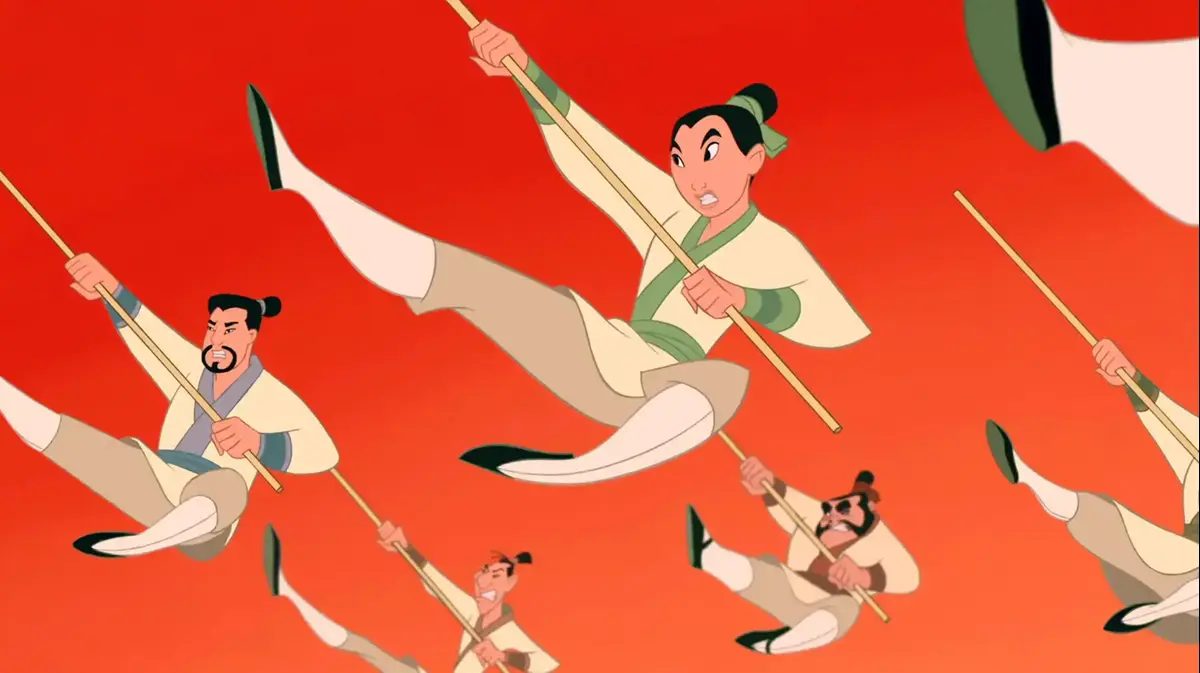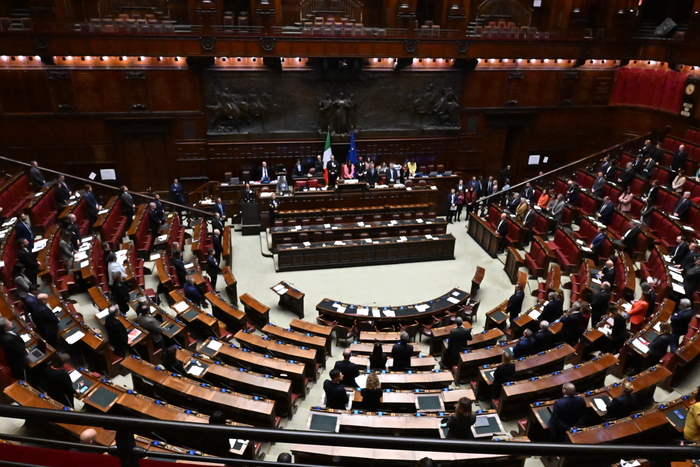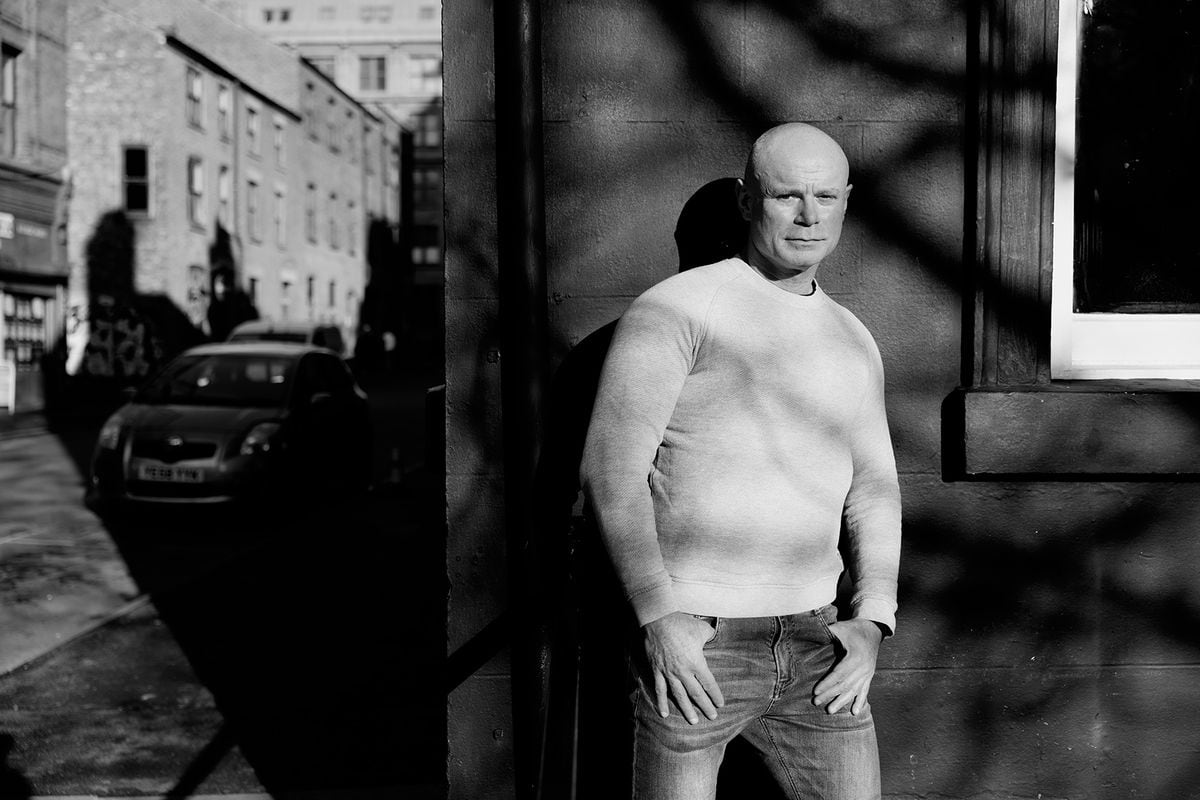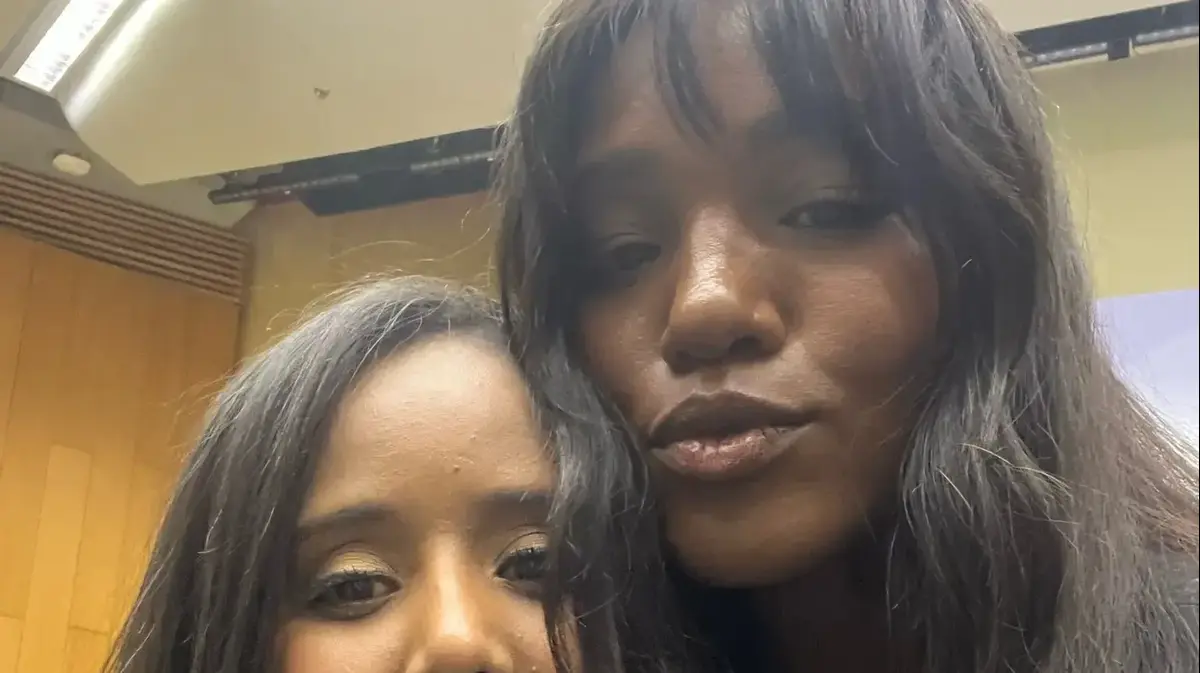Before "Frozen" or "Luca" angered conservatives and thrilled queer viewers, we had Mulan, the first Disney heroine with a chest-flattening Binder. After not finding herself in the stereotypical female role, she rediscovered herself as a war heroine. Cross dressing as a central part of the plot, which returns in the final act when three characters board female drag, a tentative affair with the commander who knew her as a slightly strange soldier - this whole thing is very queer, in a way that today would have caused a huge uproar. Mulan is celebrating its 25th anniversary these days, and it's a good opportunity to talk a bit about the roads that led to it and see what has changed.
The nineties were good for Disney's animation studio. After years of deterioration in the studio's status, financial losses and threats of closure, the successes of Little Sea House, Aladdin and Beauty and the Beast have once again made it the industry's leading studio. The idea to make an animated film based on an East Asian fairy tale first arose in 1993, when a producer at the company asked Robert D. Soucy, a children's writer who had worked with Disney as a consultant, for an idea for a folktale from the region. San Souci presented him with the draft for his next book, a children's book based on The Ballad of Hava Mulan, an ancient Chinese folk song. Five screenwriters turned that idea into Mulan, the Disney version, directed by Barry Cook and Tony Bancroft, a special effects artist and animator who had not previously directed a feature film.
The Ballad of Hava Mulan, or at least its first recorded version, was written sometime between 386 and 535. As befits a folk tale, the poem has undergone transformations and changes over the centuries - but the essence was and remains the story of a young woman who secretly enlisted in the army to protect her old father. After 12 years, the same woman, who apparently was not based on a real historical figure, returns to her family home. Only when she changes into her old clothes do her comrades in arms discover that a woman has been fighting by their side all this time. In the 20th century, the song inspired plays, opera, and films in China and Hong Kong, and in the West it became more popular following a 1975 book by Chinese-American author Maxine Hong Kingston, The Warrior Woman, which combined Chinese fairy tales with autobiography.
Hava Mulan, painting on silk, 19th century (Photo by Getty Images, Culture Club/Getty Images)
The initial version of the script went in the direction of a romantic comedy, in which young Mulan runs away from home to avoid marrying a man she has never met or to distance herself from parents who do not understand her. Writing staff leader Chris Sanders, who went on to direct Lilo & Stitch and My First Dragon, suggested recalculating: Mulan would run away from home not as a rebellion against her family, but because of her great love for her father. Work on the film lasted five years and it was the first to be created at the studio's Orlando branch, Florida, with physical distance from the company's management in California giving the crew relative freedom of action and space for experimentation and innovation.
The production team visited China for inspiration, with the visual style for the film influenced not only by classical Chinese art but also by early Disney films such as Bambi and Dumbo, German expressionism and even spaghetti westerns. One producer called the resulting style "poetic simplicity" — a design simpler than the colorful, detailed animation of other Disney films of the period, with watercolor backgrounds and a composition designed to emphasize and emphasize the characters in the frame. To create an entire army of Hun soldiers, Disney's team developed software that was named "Attila", after the well-known Hun King.
The traditional and refined approach was also expressed in directing, at least some of the time. There were subtle and meager scenes in dialogue to completely silent ones, such as the escape scene in which Mulan cuts her hair – but there were also some with fast, witty dialogue and jokes in a modern tone, especially those of Mushu voiced by Eddie Murphy. The songs written by David Zippel ("Hercules") and Matthew Wilder also combined Chinese elements with the usual Disney style in the spirit of Broadway – and that combination worked, somehow. The most beautiful example is the sharp transition from the song in which the soldiers talk about the girl of their dreams, laugh at each other and play in the snow - to the exposure of a battle scene between the Chinese army and the Huns, in which Commander Li Shang learns of the death of his father, the general.
Animation defined as "poetic simplicity". From "Mulan" (Photo: official website, Disney)
The voice cast consisted mostly of actors of East Asian, not necessarily Chinese, descent — the Emperor of China was played by Japan's Noriyuki Morita, better known as Mr. Miyagi from The Karate Kid. They were joined by supporting actors such as Harvey Fierstein as Yao and Eddie Murphy, as the voice of the dragon Moshu, created to replicate the success of the genie from Aladdin.
Initially, the directors planned to cast Leah Slunga, a Broadway star of Filipino descent who had already given another Disney princess, Jasmine, her voice in "A whole New World." However, Salonga found it difficult to play Mulan in her "masculine" role as the soldier Ping and was therefore entrusted with singing duties only, while Ming Na Wen, a native of Macau who impressed the directors with her role in the film Circle of Joy of Fortune, was recruited for the speech segments. As part of the promotional campaign for the Disney film, they released another version of the song "Reflection" performed by a young singer named Christina Aguilera - a graduate of Disney's Mickey Mouse Club, whose song was actually her first single. Following the success of the single, Aguilera received the recording contract that made her the star she is today.
"No one would make the mistake of thinking that Mulan is a princess."
Despite the desire to maintain a degree of authenticity and respect the source material, Mulan was still a Disney children's film, so of course the legend had to undergo some changes. Mulan is portrayed in it a bit like an ordinary modern teenager, who writes shuffles before an exam and makes faces when she is forced to put on makeup and dress nicely. Besides, it has two funny sidekicks to lighten the atmosphere a bit - Moshu and the cricket Keri-ki. The last was the instruction of Disney's then-CEO, Michael Eisner, which greatly irritated the staff. Animator Barry Temple, who was in charge of animating the character, said: "I would sit in meetings and ask things like, 'And where's the cricket in all this?' and then someone would say, 'To hell with the cricket.' They felt it wasn't necessary for the story, which is true."
"Mulan" arrived in theaters after several relative failures of Disney - "Pocahontas," "The Hunchback of Notre Dame" and "Hercules." None of them were quite a flop, but they did not replicate the achievements of "The Lion King" and other films of the same decade, which instantly became beloved and very profitable classics. As a result, the budget for promoting the film was cut in half compared to "Hercules", without huge flashy premieres and with a planned target audience of both children and adults. The goal was to "let the film do the talking", with the PR emphasis on the initial representation of a Chinese legend at Disney. This Chinese was marketed, of course, through the usual American filter - paper lanterns and fortune cookies at the premiere, a children's meal at McDonald's with toys from the movie and limited edition Sichuan sauce, etc. In a promotional video for the film, voice actor Ming-Na Wen was filmed reciting a somewhat artificial text about her childhood dream of being like Mulan, as did all the girls around her. Ven, it should be noted, moved to the United States when she was four years old.
More in Walla!
"Bambi" is 80 years old, and his moral is more important today than ever
See full article >
A different kind of adventure. From "Mulan" (Photo: official website, Disney)
In general, Disney wanted to brand Mulan as a feminist model for girls and distinguish her from the heroines in previous studio films. She is scattershot and a little strange, but also active, a skilled fighter and someone who knows how to think outside the box. In an article celebrating the film's 1998 release, director Tony Bancroft said of her: "She doesn't want to change herself or look for a better life, she just wants to be accepted as she is." Veteran Disney animator Mark Hahn added: "She doesn't look like a Barbie doll. No one would make the mistake of thinking Mulan was a princess."
Ironically, when Disney succeeded in turning its princess into a separate brand of toys and merchandise, Mulan was added to this lineup. So yes, Mulan is a beloved character and the only Chinese Disney heroine ever, but she's certainly not a princess or a prince's spouse. In fact, her only connection to the royal family is that the Emperor of China awarded her a medal, which he did only after she destroyed his palace. But there's nothing Disney's marketing department can't solve, and in a flash, Mulan's "Princess Version" was painted in a flashy quasi-traditional outfit and heavy makeup. Something similar happened to Merida, the heroine of the film "Brave", released in 2012. Angry reactions and just the zeitgeist had an effect, and the design of the two for the princess brand was refined to be more reminiscent of the characters from the original films.
More in Walla!
"Strange World" is a beautiful, important and cute film. From Disney we expect a little more
See full article >
Throughout the film, Mulan is required to "pass" as a man. From "Mulan" (Photo: official website, Disney)
Mulan wasn't the first Disney heroine to actively work to get what she wanted – even Disney princesses who are considered passive got stuck in this role because of the circumstances of the story rather than a delicate and fragile nature, God forbid. In the decade leading up to Mulan, we got Ariel, Belle, Jasmine, and Pocahontas, all opinionated heroines following Ben and their dreams – but the story around them still put a love story at the center.
Mulan, on the other hand, acts for other reasons and embarks on a different kind of adventure, the issues that concern her are the safety of her family and country, as well as her image and self-realization. And yes, she also finds love during the film, but that's more of a bonus than the center of the story. Since then, Disney has presented different and interesting types of girls and young women. The new princesses at Arsenal are already almost "action princesses", with Anna and Elsa not settling for the crown and becoming the de facto leaders of their kingdom. Elsa, like Moana and Mirabel from Encanto, doesn't even have a romantic plot.
Drag vs. the Huns
Then there's the queer issue, which in real time went a little under the radar between feminism and Asian representation. Nonetheless, the declaration of war comes shortly after Mulan screws up a meeting with the matchmaker and struggles to play the role of the "perfect daughter." After Mulan's company mates discover her true identity and leave her behind in the snow, she tells Moshue that perhaps devotion to her father was not the only reason for her decision, but also the desire to "prove what I'm capable of. So I can look in the mirror and see someone of value there." In the song "Reflection", she expresses the fear that her family will not accept her as she is, and wishes to see in the mirror a reflection that will show "who she is inside". Her rebellion against gender conventions can be read as female empowerment, but she is also relatable and moving from the perspective of gender expression that is different from the norm or a non-binary or trans identity.
Throughout the film, Mulan is forced to "pass" as a man, a task that turns out to be just as difficult as the character she has to play to the matchmaker. At first she fails miserably and brags about "a male urge to kill someone, fix things, cook in the open field", but over time and with a little help from the male empowerment anthem "I'll Make a Man Out of You" - she learns the principle. The most "masculine" and toughest man in the company, Yao, is voiced by Fierstein, a Broadway legend who, among other things, played Adana Turnblad in Hairspray and wrote the musical's versions of queer works such as Birdcage and Kinky Boots. Moreover, as part of the final battle against the Huns, Mulan dresses and makeup Yao, Ling, and Qin Pao and sends them to seduce the guards as drag characters for all intents and purposes.
Captain Li Shang doesn't do drag himself in the film, but some consider him a bisexual symbol thanks to his crush on Mulan/Ping. When his voice actor, B.D. Wong, was previously asked if Shang had already had his eye on Mulan in her male form, Wong replied that he used to deny that claim, but now he believes so: "It's important to recognize that sexuality is fluid... It's not some needle going from zero to a hundred." Tim Hodge, a member of the film's writing team, noted that while working on the scene where Mulan saves Shang's life, he suggested "adding the line, 'Ping, if you were a girl I'd kiss you.' No one thought I was serious."
One of the many changes made to the live-action version of Mulan from 2020 was the replacement of Li Shang with two new characters - an older commander and a potential new spouse, a soldier in Mulan's company. The outrage on social media over the decision was so dramatic that the film's producer, Jason Reid, referred in an interview to the captain becoming an "LGBTQ icon" over the years.
"Mulan understands that all heteronormative gender types are largely perpetuative," to quote Alex Abd Santos for Vox magazine. "It exploits societal expectations of femininity and masculinity to its advantage, and ultimately saves all of China in this way. The combination of a scene where drag is a force — and another with Fierstein in the cast — suggests Disney knew how the film would affect queer viewers."
That message is especially important now that drag queens and people on the trans spectrum are under conservative attack and accused of endangering children. In this struggle we know which side we are on, and not just because his heroine defeated the commander of the Hun army with a pack of fireworks and a fan.
- culture
- cinema
- Movie Review
Tags
- Disney





/cloudfront-eu-central-1.images.arcpublishing.com/prisa/K3WTDWC7UBAPPI554H3BSRMRAQ.jpg)








